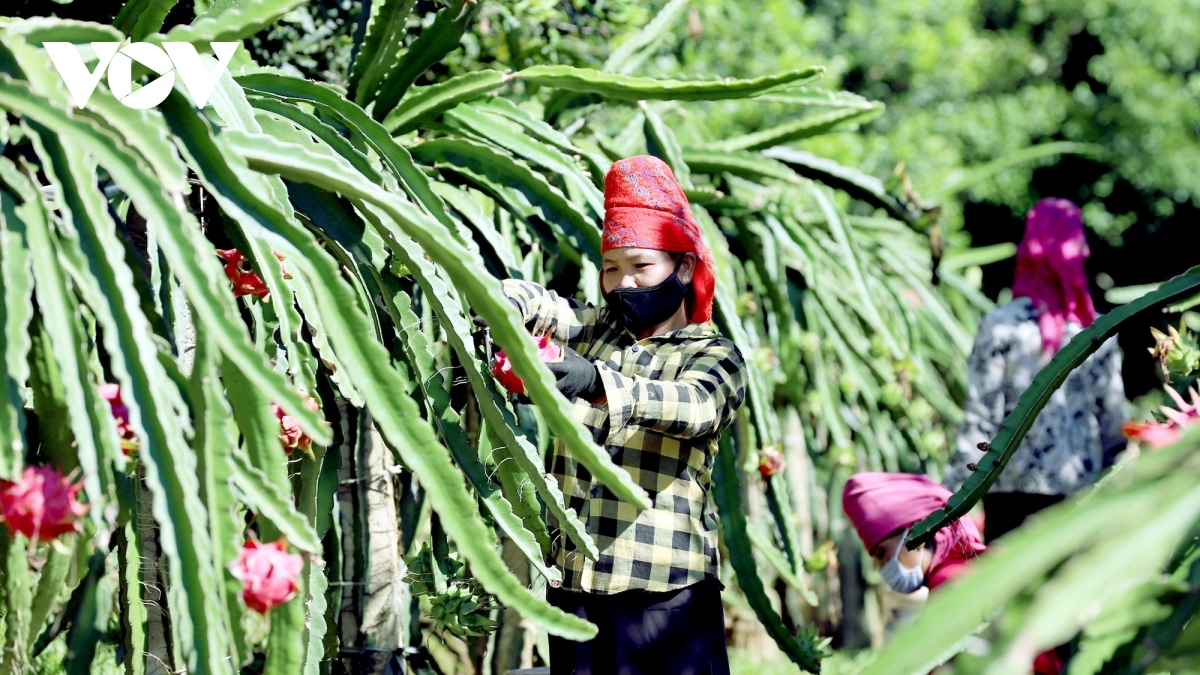Vietnamese dragon fruit enjoys advantages in international market
Vietnamese dragon fruit continues to enjoy advantages in international markets, with the diversification of dragon fruit products being considered the right direction to expand consumption channels, whilst developing markets and brands.

In the nation, dragon fruit is classified as a key export fruit product which rakes in billions of US$ each year. The largest consumers of Vietnamese dragon fruit are China, Thailand, and Indonesia.
In addition, Vietnamese dragon fruit has also been exported to many other countries globally, such as India, Australia, New Zealand, Japan, the EU, and Chile.
Nguyen Tuan Thanh, director of Long An province’s Department of Industry and Trade, revealed that the southern province has been developing sustainable dragon fruit cultivation areas and is in the process of applying high-tech solutions to agricultural production.
Apart from red and white-flesh dragon fruit, the province has also developed varieties of purple, pink, and yellow flesh-dragon fruit with high nutritional composition, Thanh said.
He added that Chau Thanh dragon fruit has been granted a certificate of geographical indication registration by the National Office of Intellectual Property. Indeed, the Tam Vu dragon fruit trademark is protected in five countries, including the United States, France, Japan, Singapore, and China.
Meanwhile, Binh Thuan province is also home 33,750 hectares of dragon fruit growing areas, of which 11,936 hectares and 517 hectares have now been certified by VietGAP and GlobalGAP standards, said Bien Tan Tai, deputy director of Binh Thuan Department of Industry and Trade.
Vu Ba Phu, director of the Vietnam Trade Promotion Agency (Vietrade), said Vietnamese dragon fruit makes up large market shares in Asia, Europe, and the US, with the product being consumed by many Europeans and Asian Americans.
However, Vietnamese dragon fruit is currently facing increasing competition from some other regional suppliers from Taiwan (China), Thailand, and Malaysia, Phu noted.
He also pointed out that dragon fruit exports have tended to encounter numerous difficulties in recent times due to the complicated nature of the COVID-19 pandemic, China’s strict control over farm produce at border gates, and high logistical costs.
Nguyen Phu Hoa, trade counselor of the Vietnam Trade Office in Australia, revealed that the office has deployed several schemes aimed at supporting businesses in introducing their products in the Australian market. Whilst growers and businesses must pay attention to consumer tastes and market requirements to make further inroads into the demanding market.
Ta Duc Minh, trade counselor of the Vietnam Trade Office in Japan, has advised local firms to take advantage of tax incentives from FTAs, including the Vietnam-Japan Economic Partnership Agreement (VJEPA), ASEAN-Japan Comprehensive Economic Partnership Agreement (AJCEP), and the Comprehensive and Progressive Agreement for Trans-Pacific Partnership (CPTPP). This should be done while focusing on the application of post-harvest technology in order improve product quality, thereby meeting the distinct tastes of each target customer group.

